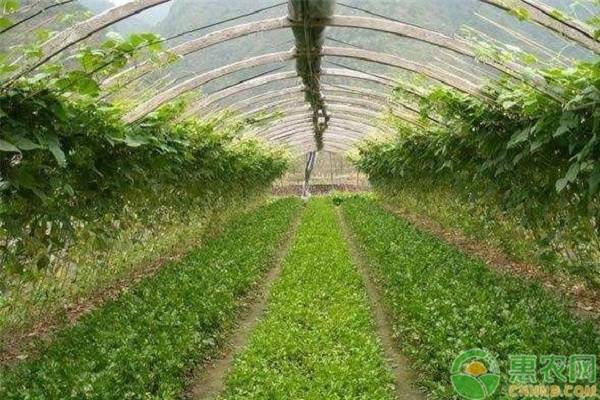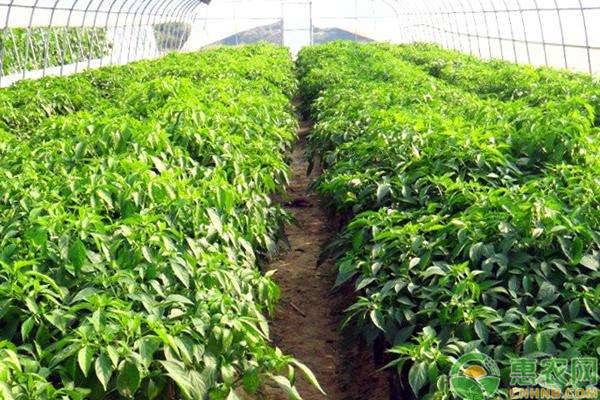At present, most of the areas have greenhouse vegetable cultivation models. Greenhouse-cultivated vegetables can not only avoid the leakage of open-field cultivation, but also cultivate various vegetables in seasons throughout the year. However, greenhouse cultivation of vegetables requires special attention to the prevention and control of pests and diseases. Let's learn about the common pest species of greenhouse vegetables and their control measures. First, sassafras (1) Occurrence and Hazard: The sassafras mites are small and invisible to the naked eye, but they breed very quickly. At 28-32 ° C, 4 to 5 days of breeding for 1 generation, at 18 to 20 ° C, 7 to 10 days 1 Generation, about 25 generations can occur in 1 year. Mainly in the greenhouse greenhouse breeding hazards, the damage is the top of the plant leaves, when the young leaves become old, that is, the old leaves turn to the new young leaves, it is also known as "new leaves." After the leaves are killed, the back becomes brown with oily light, twisted deformed, and the top is dry. After the flower and fruit are damaged, they do not bloom, do not take fruit, the skin is yellowish brown, the wood is plugged, and the crack is cracked. (2) Prevention and treatment method: 73% of Kruth 1000 times liquid, or 25% yttrium manganese WP 1000-1500 times liquid, or 10% dying net 3000 times liquid can be used for prevention and control, spray every 5 to 7 days. Second, even spray 2 or 3 times. In addition, after harvesting the former crops, it is necessary to remove the fallen leaves in a timely manner, burn them intensively, and spray the whole shed to kill the insects. Second, red spider (1) Occurrence and Harm: The red spiders that occur in greenhouse vegetables in winter and spring are mainly cinnabar leafhoppers and two-spotted spider mites. It takes about 20 generations in one year. It occurs severely under high temperature and dry conditions (developing temperature is 21 to 30 ° C), and the temperature is more than 30 ° C, and the humidity is greater than 70%. The way to harm is to suck the juice on the back of the leaf with a sucking mouthparts and form a wire mesh. The damaged leaves are chlorotic, white spots appear, and then the leaves are dry. Generally, the lower leaves are harmed first, and then spread from the bottom to the top. (2) Prevention and treatment methods: The lower old leaves are removed in time and taken out of the shed for burning. Adjust the temperature and humidity inside the shed to create a high-temperature, high-humidity environment, and timely watering to inhibit its spread. Chemical control can be used 1.8% of the agricultural sputum EC 2000 times solution, or 20% gram milk 2000 times solution, or 40% sulphur sulphur emulsifiable 2000 times solution, spray once every 7 to 10 days, even spray 2 ~ 3 times. Third, the locust (1) Occurrence and Hazard: There are mainly three types of greenhouse mites, namely melon, soybean meal and peach aphid. It can occur in 20 to 30 generations in one year, and it is harmful all year round. The aphids cluster on the back of the leaves and on the tender stems, sucking the plant juice with a sucking mouthparts, making the leaves yellow, curled, and even dead. In addition, aphids also transmit viral diseases, which is extremely harmful. (2) Prevention and control measures: 25% of Aikas 1000 times liquid, or 10% cypermethrin 2000 times liquid, or 50% sputum mist 2000 times liquid can be used for prevention and control, spraying once every 3 to 5 days, even spraying 2~ 3 times, it can also be used to control the smoke-killing agent, using 350 grams per acre. Fourth, Hummer (1) Occurrence and Hazard: Hummer mainly harms vegetables such as melons, eggplants and legumes. The nymph is yellow and the adult is brownish yellow, so it is also called brown and yellow horse. It takes about 15 generations in 1 year, and it breeds all the year round, overlapping generations. More on the back of the blade or drilled into the petals to absorb the juice of young leaves, young shoots, flowers and young melons. The damaged shoots, flowers and young melons are dark brown, hardened and reduced, which seriously affects growth. (B) Prevention and treatment methods: 25% Aikas 1000 times solution, or 10% beta-cypermethrin 2000 times solution can be used, and then an equal amount of synergist, such as anti-reaction liquid, can be added. Spray once every 3 to 5 days, even spray 2 to 3 times. Five, leaf miner (1) Occurrence and Hazard: The leaf miner mainly harms beans, solanaceous fruits, cruciferous vegetables, and green onions and leeks. 4 to 5 generations occur in 1 year. The eggs are laid in the mesophyll, and the larvae eat the mesophyll, and the leaves are chlorotic and white after being damaged. (2) Prevention and treatment methods: After the vegetables are harvested, the remaining leaves of the residual branches are removed in time, and the insects are concentrated and burned to reduce pests. In addition, 25% Aikas 1000 times solution, or 10% beta-cypermethrin 2000 times solution, or 20% chrysanthemum emulsion 2000 times solution, or 21% killing emulsifiable concentrate 3000 times solution, and then add the same amount of synergist Control, spray once every 3 to 5 days, even spray 2 to 3 times. For the wonderful pictures and popular comments on the five pest control technologies for greenhouse vegetables, you may be interested in the following recommended contents. Welcome to read. Disposable Electroencephalogram Monitoring Sensor Disposable Electroencephalogram Monitoring Sensor,Anesthesia Depth Sensor,Eeg Equipment,Eeg Disposable Sensor JIANGSU JIANLAIBANG MEDICAL EOUIPMENT CO.,LTD , https://www.jsjlbmed.com

